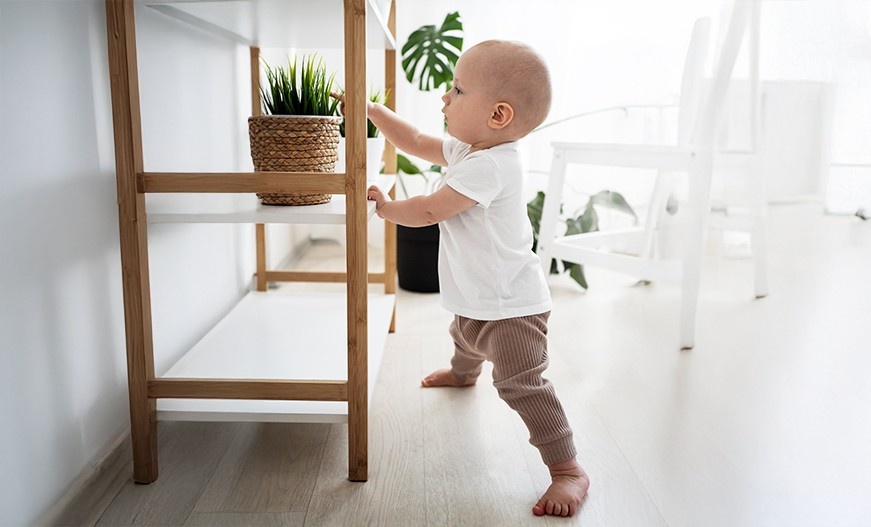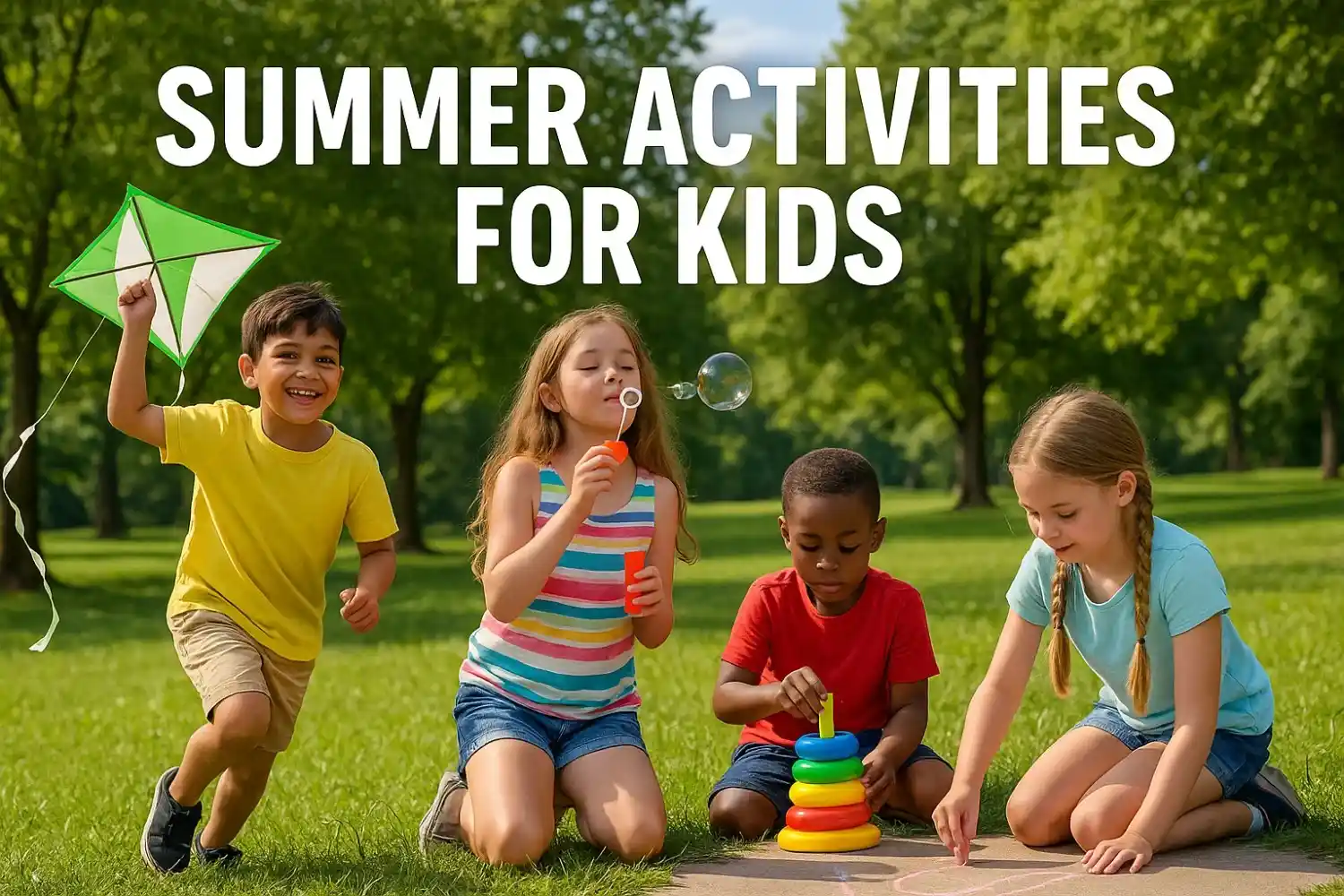Currently Empty: ₹0.00
5 Signs Baby Will Walk Soon

Written By: Pinky Kharata
Published By: Satya Narayan Pandey
Watching your baby grow and reach new milestones is a truly special experience. One of the most exciting moments is seeing those first tiny steps. If you are wondering when do babies walk, it is important to remember that every child develops on their own timeline. Still, there are a few early signs baby will walk soon, such as pulling up, cruising along furniture, or standing without help.
Noticing these signs can help you feel more prepared for the next stage. If you are thinking about how to make baby walk, simple encouragement, age-appropriate toys, and plenty of floor time can make a big difference. Let us look at the signs that show your baby might be ready to take that first step.
When Do Babies Start Walking?
Babies usually start walking on their own between 12 and 15 months, but some may begin as early as 9 months or a bit later. Every child is different, so there’s no fixed time for when baby start walking. Before walking alone, many babies try cruising by holding furniture and taking small steps. These are early signs baby will walk soon. If you’re wondering when do babies walk, just give them time and support. To help with baby learning to walk, create a safe space and cheer them on. Wondering how to make baby walk?Just give lots of encouragement and make it a playful experience.
Signs Baby Will Walk Soon
Every baby reaches milestones in their own time, but there are some clear signs baby will walk soon. As your baby grows stronger and more curious, you’ll start to notice small changes in how they move and explore. These changes often show that your baby is getting ready to walk. Watching for these early signs can help you understand where your little one is on their walking journey and how you can support them.

1. Pulling Up to Stand (7 to 10 Months)
One of the first signs baby will walk soon is when they start pulling themselves up to a standing position. Around 7 to 10 months, babies often try to grab onto furniture, crib rails, or even your hands to lift themselves. This helps them strengthen their leg muscles and get a feel for standing. It also builds balance and confidence. If your baby is pulling up to stand, they’re getting ready to take their first steps. You can support them by placing safe, stable furniture nearby and cheering them on during each effort.
2. Cruising (9 to 13 Months)
Cruising is a common stage between crawling and walking. From about 9 to 13 months, your baby might start moving sideways while holding onto furniture like sofas, tables, or shelves. This side-stepping motion helps improve balance, leg strength, and coordination. It’s a clear sign your baby is learning to walk. During this time, your baby is practicing how to shift their weight and build the confidence they need to eventually let go. If you’re noticing more cruising, it’s a strong hint that your baby will start walking soon.
3. Standing Unassisted (10 to 16 Months)
When your baby begins to stand without holding onto anything, it’s one of the biggest signs baby will walk soon. Most babies start standing on their own between 10 to 16 months. At first, they might stand just for a few seconds, then slowly increase the time as they gain strength and balance. This stage shows that your baby is preparing to walk independently. You might notice them trying to take a step but falling quickly, that’s perfectly normal. Keep encouraging your baby with smiles and open arms so they feel safe while trying.
4. Crawling
Though not all babies crawl before walking, many do, and it plays an important role in building the muscles and coordination they’ll need for walking. Crawling helps babies strengthen their arms, legs, and core. It also helps them learn how to move their body and shift weight from side to side. If your baby is crawling confidently, it’s a good sign that they are developing the skills needed to eventually stand and walk. While crawling may not seem like a direct sign, it’s an essential part of the baby learning to walk process.
5. Fussiness
Sometimes, a fussy baby might actually be showing signs of growth and change. As babies get closer to walking, they often become more restless, frustrated, or clingy. This could be because they want to move more but haven’t yet figured out how. Fussiness during this time can be linked to the changes in their brain and body as they prepare for new skills. So if your usually happy baby is suddenly cranky and active, it might be one of the early signs baby will walk soon.
Baby Learning To Walk Tips & Tricks
Watching your baby learn to walk is a proud and exciting moment for parents. While every baby follows their own timeline, gentle support can help along the way. Below are a few easy tips and tricks to guide your baby’s first steps.

1. Lend a hand
Gently holding your baby’s hands while they try to walk gives them balance and comfort. It helps them feel safe and supported as they take small steps. This simple action encourages movement and builds confidence in a baby learning to walk. Parents can also make walking fun by smiling and talking to their baby during the process.
2. Rearrange Furniture
When a baby is learning to walk, having open and safe spaces is important. Parents should move sharp-edged or bulky furniture out of the way and create clear walking paths. Babies love to hold onto furniture for support, so placing sturdy items like a sofa or low table nearby can help them practice safely. A clutter-free area encourages movement and reduces the risk of small falls.
3. Motivate with Toys
Toys can make walking more fun for babies. A neem wood rattle toy set makes gentle sounds that catch their attention and get them excited to move. Soft toys like the train are great too. They are fun to hold and also help with listening skills through simple sound. These toys keep babies curious and encourage them to take more steps.
4. Avoid Baby Walkers
Many parents wonder when do babies walk and may consider using baby walkers to speed up the process. However, walkers can actually delay walking and may cause safety risks. Babies need to build strength in their legs by standing and moving freely on flat surfaces. Instead of walkers, encourage natural movement through safe playtime and floor practice. Letting babies explore on their own helps them develop balance and coordination at their own pace.
5. Expect Falls
Your baby will fall often while learning to walk, and that is completely normal. These small tumbles help them understand balance, build strength, and resist the urge to jump in too quickly. Letting them try again teaches resilience and boosts confidence. As long as the space is safe, falling becomes a valuable part of learning how to move and explore.
How To Encourage Walking In Babies?
Helping a baby learn to walk can be a joyful time for parents. It is important for parents to provide plenty of safe space where the baby can move around freely. Allowing babies to play on the floor and explore their surroundings helps build strength and confidence. Parents can gently hold their hands or use toys to guide and motivate them.
If parents are wondering how to encourage walking in babies or when do babies walk, it’s good to remember that every child develops at their own pace. Giving babies love, care, and gentle support is the best way to help them learn to walk.
Conclusion
Parents often look for signs baby will walk soon as their little one grows more active and curious. Every step, from standing to cruising, is part of a baby learning to walk. While some babies walk early and others take more time, both are normal. If you’re unsure when do babies walk, reach out to a pediatrician for support and expert advice.







